8+ Sample Enterprise Action Plan
-
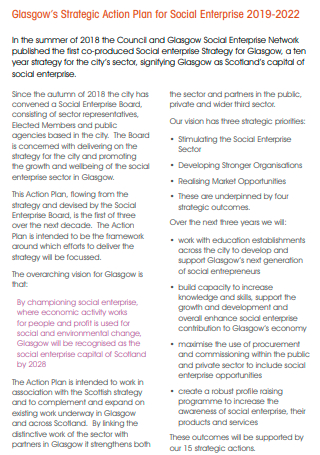
Social Enterprise Strategic Action Plan
download now -
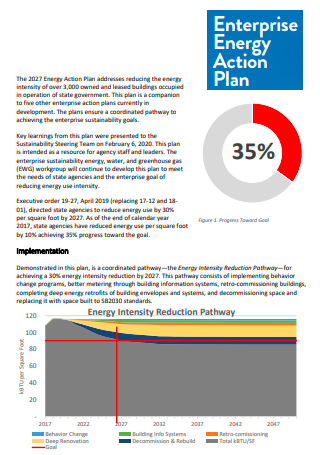
Enterprise Energy Action Plan
download now -
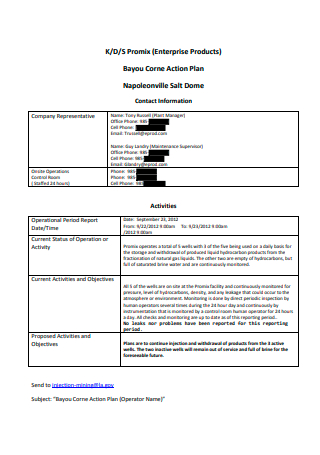
Enterprise Products Action Plan
download now -
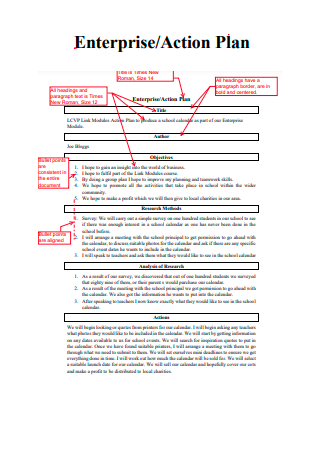
Enterprise Action Plan Example
download now -
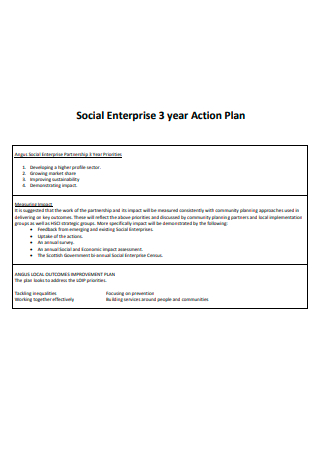
Social Enterprise 3 Year Action Plan
download now -
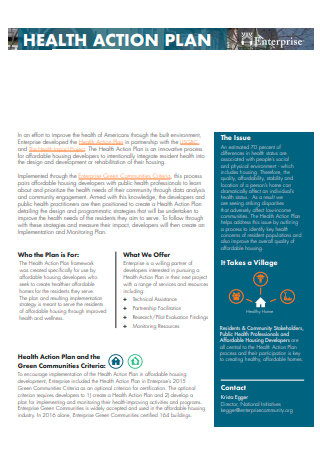
Enterprise Action Plan in PDF
download now -
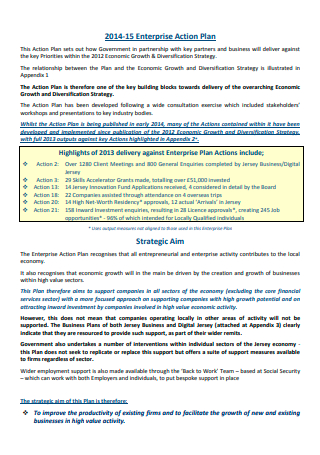
Printable Enterprise Action Plan
download now -
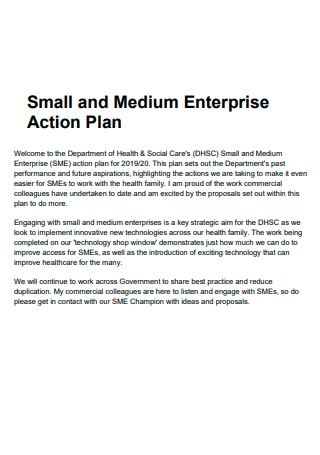
Small and Medium Enterprise Action Plan
download now -

Enterprise in Education Action Plan
download now
FREE Enterprise Action Plan s to Download
8+ Sample Enterprise Action Plan
an Enterprise Action Plan?
Benefits of Enterprise Action Plan
Elements of an Enterprise Action Plan
How To Create an Enterprise Action Plan
FAQs
What constitutes a good action plan?
Why is an action plan necessary in a company enterprise?
What is summary in a report?
What Is an Enterprise Action Plan?
Action plans are documents that define the development and implementation of projects in a precise, strategic, and specified manner. Action plans can be used to guide the completion of any project regardless of its scale, shape, size, or type. Specifics are irrelevant; if you want your endeavor to succeed, the best course of action is to create an action plan. As a result, the term “action plan” was coined. The document is typically more than a handful of pages, depending on the length and scope of the project. It encompasses a broad area, nature, and timeline for enterprise action plans. The contents, such as steps and tasks, must be explicit and thorough enough for team members to recognize and comprehend the duties assigned to them immediately. Vagueness in an action plan will only add to the confusion, not alleviate it. You may believe that this is merely a plan, but you must understand that its simplicity is precisely what makes it so valuable. There is tremendous strength in having you and your entire team know where you’re going and how you’re going to get there. According to Small Business Administration (SBA) figures published in 2019, approximately 20% of business beginnings fail during the first year. Around 50% of businesses fail within five years. By the tenth year, only about 33% survive.
Benefits of Enterprise Action Plan
Is your small firm in need of an enterprise plan? If you are seeking external support, you must submit a written proposal. However, the advantages of an enterprise strategy extend beyond locating lenders. A process can assist you in growing your business. Like most people, you won’t purchase a car without studying. You would choose one after assessing several automobiles’ positive and negative characteristics. It’s the same with your business operation. It will help if you guarantee that your venture has the potential to be a profitable investment. A business strategy can be as simple as an outline or as extensive as a white paper. Your plan serves as a road map, showing you the right way. A business strategy is not a commitment that must be kept over time.
Elements of an Enterprise Action Plan
1. Executive Summary
The executive summary‘s purpose is to contextualize the remainder of your business plan by providing a high-level overview — essentially an elevator pitch. Entrepreneurs often finish the executive summary last, as it summarizes the contents of the remainder of the business plan. Business owners frequently discuss the objective of their business idea and their founders’ background. A value proposition is typically included in the executive summary, describing how the new business idea differentiates itself from existing businesses competing for the same audience.
2. Market Analysis
To thrive in the industry, you must first understand your competition and market position. In a market analysis, you’ll need to define your business’s role in the market, for example, whether your coffee shop caters to college students looking for a late-night study spot or to morning commuters looking for healthy breakfast options and strong coffee. You might incorporate profiles or personas of your ideal customers when you explain your target market. Additionally, you may include a SWOT analysis, in which you discuss your business’s strengths, weaknesses, opportunities, and threats. A potential option could be a trendy neighborhood site with no other coffee shops, while a potential threat could be an area overrun with cafes. Your coffee education may be a strength; a weakness may be a lack of coffee education, which may be solved by intelligent hiring. By delving into this level of detail, you can demonstrate to investors that you understand your customer and have anticipated their demands in your business model.
3. Sales Strategies
Your idea will not succeed unless and until you achieve your sales targets. That means that financiers will remain uninterested unless you demonstrate that you have innovative ideas for marketing your goods. After you’ve established your items’ market position, you should discuss the promotional techniques you’re utilizing to launch the firm and any fantastic ideas you have for the future. While your coffee shop is not yet open, you may be teasing it on social media or crafting a press release to promote your location acquisition. Include these methods and any other plans you have for your big opening and beyond. Remember to discuss your business’s website, including your SEO strategy and client loyalty programs, such as a student discount.
4. Funding
Finally, the money required to start your firm enters the picture. This section discusses the amount of money needed to open your business. Along with the financials, you’ll want to give investors a timeline to understand when you want to open and what needs to happen in the interim. You can discuss your location, build-out, licenses and permits, company insurance, inventory sourcing, hiring, and employee training in the timeframe, among other things. The more specific this part is, the more delighted donors will be. When they realize that you are knowledgeable and have considered all that has to happen, they will be more receptive to signing on.
How To Create an Enterprise Action Plan
Many businesses engage in Strategic Planning only to discover that the process was a waste of time and money and produced no significant changes or answers. Planning can go wrong for various reasons, one of the most common being an inadequately developed or performed action plan. This tool—the primary output of strategic planning—often provides merely hazy ideas or grandiose goals without specifying how they will be accomplished. Also, initiatives may be implausible and produced without team consultation or buy-in. With this in mind, here are some steps to create one.
-
Step 1 Early involvement of your team
Your team’s participation will determine whether or not the action plan is successful. They should be involved in developing the action plan and other strategic plan parts from the start. Managers involved in strategic planning should discuss projects and particular steps in the action plan and implement them with their teams. The aim is to take fantastic ideas, filter them to find the most significant ones, create a shortlist to explore in-depth, and then concentrate on a few key activities that have the best chance of assisting the organization in achieving its strategic goals. Involving your team ensures that the best ideas are evaluated and staff is on board with the execution process. People on the front lines have some of the best planning and implementation ideas. If as many critical personnel participate, you’ll obtain the best team buy-in.
-
Step 2 Provide specific details for each action.
Typically, the action plan is presented as a single-page spreadsheet listing projects by function. All actions are simple one-off initiatives, repeating acts, or a more significant endeavor. The spreadsheet includes a key performance indicator, the names of those responsible for or involved in the industry, and an execution date. Additionally, the spreadsheet can designate a priority to the endeavor. Exact details of the actions are typically included in other sections of the strategic plan. The action plan is a concise overview of these efforts that your team may refer to frequently and use to track progress.
-
Step 3 Include a timeframe and make resource allocations.
Generally, action plans include 12 months. The spreadsheet consists of a column for each month to keep track of tasks that need to be completed. Additional columns are added for each quarter of the strategic plan’s remaining years. Additionally, many action plans fail because they do not commit sufficient people and financial resources to accomplish objectives. Ensure that enough time, support, training, and funding are allotted.
-
Step 4 Establish a procedure for monitoring and evaluation.
The action plan should include metrics for monitoring implementation. These can be in the form of milestones or quantifiable metrics. Additionally, determine how you will monitor the action plan to ensure that the actions are completed. This may include internal reports and monthly progress meetings. Monthly Meetings are frequently held, with a more in-depth assessment every quarter. Sessions assist you in recognizing and rewarding personnel for their accomplishments, identifying areas where you have fallen behind, and determining why to take remedial action.
-
Step 5 Disseminate the strategy.
Ascertain that all employees understand the action plan and their participation in its implementation. Demonstrate its value to employees and the organization. Your team must know that the action plan is a tactical component of your broader business strategy, which is focused on enhancing the company’s performance. They need to hear it from management and understand the connections. While people may oppose change, they must be convinced that the firm must exist and thrive. They need to be reassured that the strategy will not cause utter disruption and proceed in stages. You must address people’s fears and reassure them about the changes.
-
Step 6 Maintain the plan’s viability.
A strategy is not set in stone. It should be fluid, adaptable, and responsive to implementation challenges and changes in the external and internal ecosystems. You may need to adjust your actions, priorities, or overall aims. Request input from your team regularly. Regularly discussing the action plan helps keep the strategic plan alive and forefront of everyone’s thoughts and attention. Also, maintain accountability for each team member’s actions. You want the strategy to become ingrained in everyone’s daily work and not viewed as a side project to work on when you have some spare time.
FAQs
What constitutes a good action plan?
A robust action plan will define all of the actions necessary to accomplish your goal. It will assist you in achieving it more efficiently by allocating a timeframe—a start and finish date—to each step. This document can be used to establish single or several goals, depending on your needs and preferences.
Why is an action plan necessary in a company enterprise?
Your action plan can assist you in developing strategies and taking incremental moves toward long-term goals. It helps you determine the objectives you wish to accomplish, their timing, and the steps necessary to achieve them. This enables you to direct your energy into the tasks at hand.
What is summary in a report?
An executive summary should condense the report’s main elements. It should restate the study’s goal, highlight the report’s essential points, and describe any findings, conclusions, or recommendations contained in the report.
A well-written action plan increases the likelihood that whatever goal, ambition, project, or enterprise you have in mind will be completed or achieved. It assists in keeping everything in order and you and your team on track. It’s similar to a well-designed path that brings you effortlessly to your objective.
